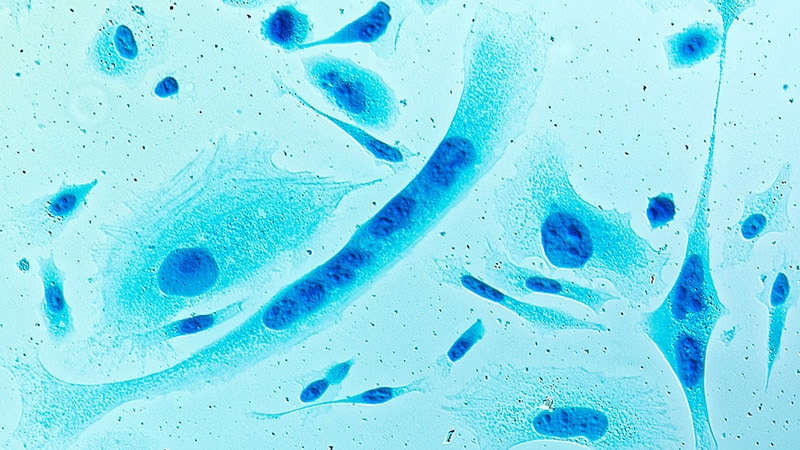TOPLINE:
Adding external-beam radiation to brachytherapy does not improve 5-year freedom from progression (FFP) for men with intermediate-risk prostate cancer, but it does increase treatment toxicity.
METHODOLOGY:
-
The study included patients with T1c–T2b prostate cancer. The patients’ Zubrod performance scale score was 0–1, they either had a Gleason Score of 2–6 and a prostate-specific antigen (PSA) level of 10–20 or a Gleason Score or 7 and a PSA level of less than 10.
-
In one arm of the randomized trial, 292 patients received prostate brachytherapy alone (145 Gy if iodine-125, 125 Gy if palladium-103).
-
In the other arm, 287 received external-beam radiotherapy (45 Gy in 25 fractions) to the prostate and seminal vesicles followed by prostate brachytherapy (110 Gy if iodine-125, 100 Gy if palladium-103).
TAKEAWAY:
-
The 5-year FFP, using the American Society for Therapeutic Radiology and Oncology definition, was 85.6% with the combination, vs 82.7% with brachytherapy alone (odds ratio [OR], 0.80; P = .18).
-
The 5-year FFP, using the Phoenix definition, was 88% with the combination, compared with 85.5% with brachytherapy alone (OR, 0.80; P = .19).
-
Adding external-beam radiation also did not yield an improvement in secondary endpoints of local progression, distant metastases, or disease-specific mortality.
-
There was no difference in genitourinary or gastrointestinal acute toxicity rates, but the 5-year cumulative incidence for late-grade 3+ toxicity was more than twofold higher with the combination (8.2% vs 3.8%; P = .006).
IN PRACTICE:
“[Brachytherapy] alone can be considered a standard of care for men with intermediate-risk prostate cancer,” the authors concluded.
STUDY DETAILS:
The study was led by Jeff Michalski, MD, of Washington University in St. Louis and was published June 14 in the Journal of Clinical Oncology.
LIMITATIONS:
-
Radiation was limited to the prostate and seminal vesicles; failure to cover pelvic lymph nodes of patients with occult nodal metastases could have contributed to the lack of benefit with radiation.
-
Some of the radiation procedures in the trial may not reflect contemporary methods and could have contributed to differences in late toxicity.
DISCLOSURES:
-
The work was funded by the National Cancer Institute.
-
Several investigators have industry ties, including Michalski, who reported receiving consulting and/or speakers’ fees from Novartis and Boston Scientific.
M. Alexander Otto is a physician assistant with a master’s degree in medical science and a journalism degree from Newhouse. He is an award-winning medical journalist who worked for several major news outlets before joining Medscape. Alex is also an MIT Knight Science Journalism fellow. Email: [email protected].
For more from Medscape Oncology, join us on Twitter and Facebook.
Source: Read Full Article
